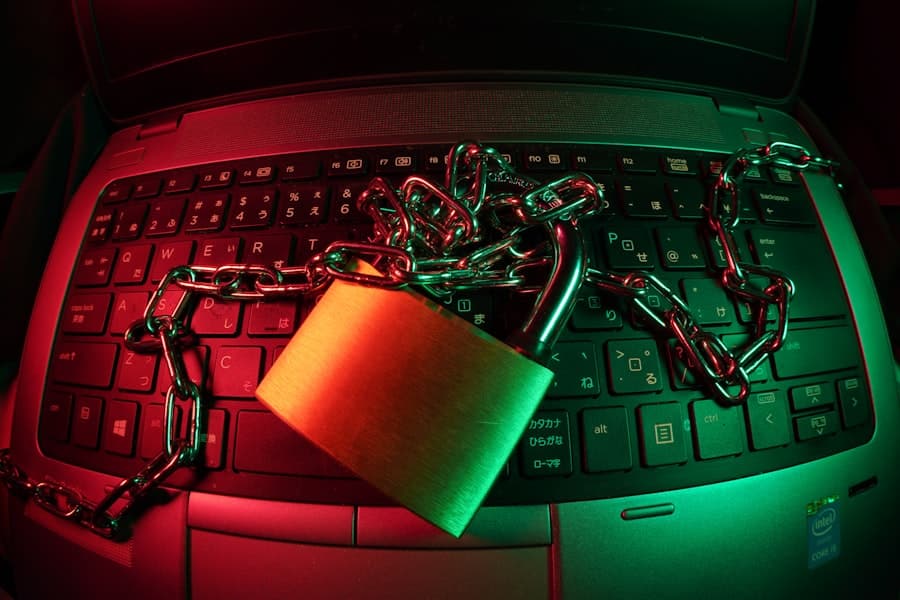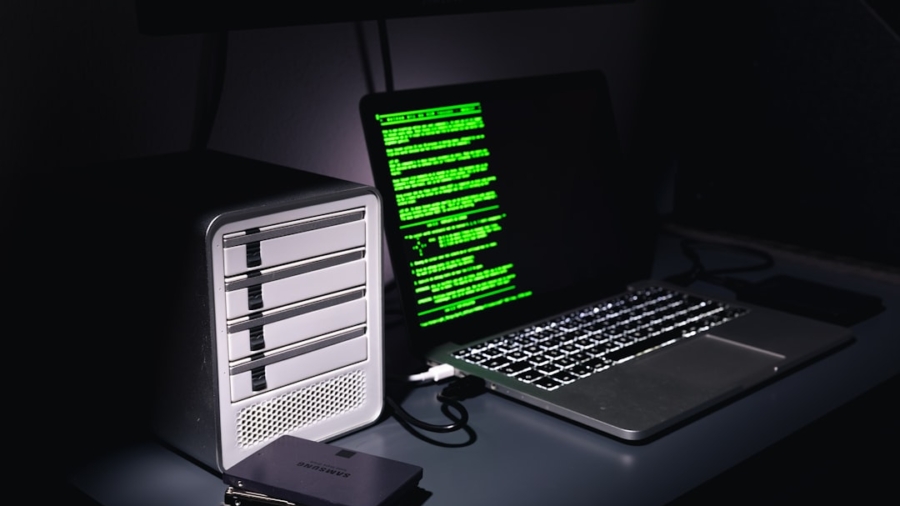The Internet of Things (IoT) represents a transformative shift in how devices communicate and interact with one another, as well as with users. IoT devices encompass a wide array of technologies, from smart home appliances like thermostats and refrigerators to industrial sensors and wearable health monitors. These devices are equipped with sensors, software, and connectivity capabilities that allow them to collect and exchange data over the internet.
The proliferation of IoT devices has been fueled by advancements in wireless communication technologies, such as 5G, and the decreasing cost of sensors and microcontrollers. As a result, it is estimated that billions of IoT devices will be in use globally, fundamentally altering the landscape of personal and industrial technology. The integration of IoT devices into everyday life offers numerous benefits, including increased efficiency, enhanced convenience, and improved data collection for better decision-making.
For instance, smart thermostats can learn user preferences and optimize energy consumption, while wearable fitness trackers can monitor health metrics in real-time. However, this interconnectedness also raises significant concerns regarding security and privacy. As more devices become part of the IoT ecosystem, the potential attack surface for cybercriminals expands, making it imperative to address the vulnerabilities inherent in these technologies.
Key Takeaways
- IoT devices are interconnected smart devices that collect and exchange data to automate processes and improve efficiency.
- Vulnerabilities in IoT devices include weak authentication, insecure network connections, and lack of encryption, making them susceptible to cyber attacks.
- Cybersecurity standards for IoT devices are crucial to protect against unauthorized access, data breaches, and potential harm to users and infrastructure.
- Not implementing cybersecurity standards for IoT devices can lead to compromised data, privacy violations, and even physical safety risks.
- Current cybersecurity standards for IoT devices include guidelines for secure design, data protection, and regular software updates, but challenges in implementation remain.
Vulnerabilities in IoT Devices
IoT devices are often designed with convenience and functionality in mind, frequently at the expense of robust security measures. Many manufacturers prioritize rapid deployment and cost-effectiveness over comprehensive security protocols. This oversight can lead to a range of vulnerabilities, including weak authentication mechanisms, unpatched software, and inadequate encryption practices.
For example, many IoT devices come with default passwords that users often neglect to change, making them easy targets for unauthorized access. Additionally, the lack of regular software updates can leave devices exposed to known vulnerabilities that could be exploited by malicious actors. Moreover, the sheer diversity of IoT devices complicates the security landscape.
Each device may operate on different platforms and use various communication protocols, creating inconsistencies in security practices across the ecosystem. This fragmentation can lead to scenarios where a single compromised device can serve as a gateway for attackers to infiltrate larger networks. For instance, a smart camera with weak security could be hacked and used to gain access to a home network, potentially exposing sensitive information stored on connected devices.
The interconnected nature of IoT means that vulnerabilities in one device can have cascading effects on others, amplifying the risks associated with inadequate security measures.
Importance of Cybersecurity Standards for IoT Devices

Establishing cybersecurity standards for IoT devices is crucial for mitigating risks and ensuring the integrity of connected systems. Standards provide a framework for manufacturers to follow when designing and deploying IoT devices, promoting best practices in security that can help protect against potential threats. By adhering to established guidelines, manufacturers can enhance the resilience of their products against cyberattacks while fostering consumer trust in their technologies.
For instance, standards can dictate requirements for secure software development practices, regular updates, and robust authentication mechanisms. Furthermore, cybersecurity standards can facilitate interoperability among different devices and platforms. As IoT ecosystems grow increasingly complex, ensuring that devices from various manufacturers can communicate securely is essential for maintaining overall system integrity.
Standards can help create a common language for security protocols, enabling seamless integration while minimizing vulnerabilities that arise from disparate security practices. This is particularly important in sectors such as healthcare and smart cities, where the stakes are high, and the consequences of security breaches can be severe.
Risks of Not Implementing Cybersecurity Standards
The absence of cybersecurity standards for IoT devices poses significant risks not only to individual users but also to organizations and society at large. Without standardized security measures, the likelihood of successful cyberattacks increases dramatically. Attackers can exploit vulnerabilities in unprotected devices to gain unauthorized access to sensitive data or disrupt critical services.
For example, a cyberattack on a smart grid could lead to widespread power outages or even physical damage to infrastructure. The potential for such incidents underscores the urgent need for comprehensive cybersecurity standards. Moreover, the lack of cybersecurity standards can erode consumer trust in IoT technologies.
This skepticism can stifle innovation and hinder the growth of the IoT market. Businesses that fail to prioritize cybersecurity may also face reputational damage and financial losses resulting from breaches or regulatory penalties.
In an era where data privacy is paramount, organizations must recognize that neglecting cybersecurity standards can have far-reaching consequences.
Current Cybersecurity Standards for IoT Devices
In response to the growing concerns surrounding IoT security, various organizations and regulatory bodies have begun developing cybersecurity standards specifically tailored for these devices. One notable example is the National Institute of Standards and Technology (NIST), which has published guidelines aimed at improving the security of IoT devices through its NIST Special Publication 800-183. This document outlines best practices for manufacturers regarding device identity management, secure communication protocols, and vulnerability management.
Another significant initiative is the Internet Engineering Task Force (IETF), which has been working on standards related to secure communication protocols for IoT devices. The Constrained Application Protocol (CoAP) is one such protocol designed for resource-constrained environments typical of many IoT applications. Additionally, organizations like the Internet of Things Security Foundation (IoTSF) have developed frameworks that provide practical guidance for implementing security measures throughout the lifecycle of IoT devices.
Challenges in Implementing Cybersecurity Standards for IoT Devices

Despite the existence of cybersecurity standards for IoT devices, several challenges hinder their widespread implementation. One major obstacle is the diversity of IoT ecosystems; with countless manufacturers producing devices across various sectors, achieving consensus on standardized practices can be difficult. Each manufacturer may have different priorities and resources available for implementing security measures, leading to inconsistencies in adherence to established standards.
Another challenge lies in balancing security with usability. Many consumers prioritize convenience over security features when using IoT devices; thus, manufacturers may be reluctant to implement stringent security measures that could complicate user experience or deter sales. For instance, requiring complex passwords or multi-factor authentication may enhance security but could also frustrate users who prefer simplicity.
Striking this balance is essential for encouraging compliance with cybersecurity standards while ensuring that devices remain user-friendly.
Future Outlook for Cybersecurity Standards in IoT Devices
As the IoT landscape continues to evolve rapidly, so too will the need for robust cybersecurity standards that adapt to emerging threats and technologies. The future will likely see an increased emphasis on proactive security measures rather than reactive ones. This shift may involve integrating artificial intelligence (AI) and machine learning (ML) into cybersecurity frameworks to enable real-time threat detection and response capabilities.
By leveraging these advanced technologies, organizations can better anticipate potential vulnerabilities and mitigate risks before they escalate into significant breaches. Additionally, collaboration among stakeholders will be crucial in shaping the future of cybersecurity standards for IoT devices. Manufacturers, regulatory bodies, cybersecurity experts, and consumers must work together to develop comprehensive frameworks that address evolving threats while promoting innovation within the industry.
As awareness of cybersecurity issues grows among consumers and businesses alike, there will likely be greater demand for transparency regarding security practices in IoT products. This trend could drive manufacturers to adopt more rigorous standards as a means of differentiating themselves in a competitive market.
Conclusion and Recommendations for Securing IoT Devices
To effectively secure IoT devices against potential threats, it is essential for manufacturers to prioritize cybersecurity throughout the entire product lifecycle—from design and development to deployment and maintenance. Implementing robust authentication mechanisms, regular software updates, and encryption protocols should be standard practice rather than optional features. Additionally, fostering a culture of security awareness among consumers is vital; educating users about best practices for securing their devices can significantly reduce vulnerabilities associated with human error.
Regulatory bodies must also play an active role in promoting cybersecurity standards by establishing clear guidelines that manufacturers are required to follow. By creating an environment where compliance is incentivized and non-compliance carries consequences, stakeholders can encourage adherence to best practices across the industry. Ultimately, securing IoT devices requires a collaborative effort among all parties involved—manufacturers must innovate responsibly while consumers demand accountability and transparency in their connected technologies.
In the rapidly evolving landscape of the Internet of Things (IoT), ensuring robust cybersecurity standards is paramount to protect sensitive data and maintain user privacy. An article that complements the discussion on the importance of cybersecurity for IoT devices is The Best Lenovo Laptops. While this article primarily focuses on selecting the best Lenovo laptops, it also touches upon the significance of security features in modern computing devices, which is a crucial consideration for IoT devices as well. As IoT devices become more integrated into our daily lives, understanding the security measures in place for all connected devices, including laptops, becomes increasingly important to safeguard against potential cyber threats.
FAQs
What are IoT devices?
IoT devices, or Internet of Things devices, are physical devices embedded with sensors, software, and other technologies that connect and exchange data with other devices and systems over the internet.
What are cybersecurity standards?
Cybersecurity standards are a set of guidelines and best practices designed to protect computer systems, networks, and data from cyber threats and attacks. These standards help ensure the security and privacy of digital information.
Why are cybersecurity standards critical for IoT devices?
Cybersecurity standards are critical for IoT devices because these devices are often vulnerable to cyber attacks due to their interconnected nature and the large amount of data they collect and transmit. Without proper cybersecurity standards, IoT devices can be exploited by hackers, leading to privacy breaches, data theft, and potential physical harm.
What are some common cybersecurity standards for IoT devices?
Common cybersecurity standards for IoT devices include the ISO/IEC 27001, NIST Cybersecurity Framework, IEC 62443, and the IoT Security Foundation’s Best Practice Guidelines. These standards provide guidelines for securing IoT devices, networks, and data.
How do cybersecurity standards benefit IoT device users?
Cybersecurity standards benefit IoT device users by providing assurance that the devices they use are secure and reliable. These standards help protect personal and sensitive data, prevent unauthorized access, and ensure the overall safety and integrity of IoT devices and systems.

